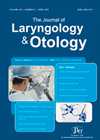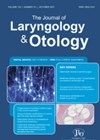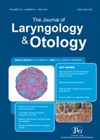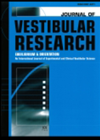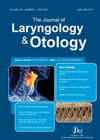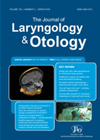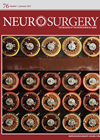
Journal Reviews
How reliable is non-echoplanar diffusion-weighted MRI in picking up postoperative cholesteatoma in children?
Cholesteatoma occurs more often in children than in adults and is more aggressive, often resulting in ossicular erosion and marked conductive loss, amongst other more serious possibilities. Recurrence happens in all three methods used, namely canal wall up, canal wall...
Gadolinium enhanced MRI and the diagnosis of Ménière’s disease
Despite various criteria applied over the years to diagnose Ménière’s disease since the concept of endolymphatic hydrops was first observed in postmortem examinations of patients in 1938, the diagnosis still remains mainly clinical. To visualise endolymphatic hydrops in MRI imaging,...
Role of non-echo planar diffusion weighted magnetic resonance imaging in detection of cholesteatoma
Whilst the method of canal wall down and same-session reconstruction is emerging to be more popular, canal wall up procedures are still performed. In either, it is necessary to ensure eradication of cholesteatoma or detect its recurrence. The reliability of...
A cost reducing protocol for magnetic resonance imaging in patients suspected to have acoustic neuroma
Magnetic resonance imaging is the ‘gold standard’ for screening patients suspected to have an acoustic neuroma. However, inappropriate referrals for imaging are not helpful, especially with the growing need to reduce costs. In this study the authors compared two audit...
MRI in diagnosis Meniere’s disease: what is the evidence?
The utility of magnetic resonance imaging (MRI) in the diagnosis of Meniere’s disease (MD) has attracted a lot of interest recently. It is well accepted that the saccule is the most common vestibular organ affected by endolymphatic hydrops (EH) and...
Radiological diagnosis of mastoiditis in patients screened for acoustic neuroma
Magnetic resonance imaging is the ‘gold standard’ for screening patients suspected to have acoustic neuroma. Various abnormalities are picked up through this investigation, one of which, not uncommonly reported, is mastoiditis. This requires referral to otolaryngology and further evaluation. In...
MRI evaluation to assess the role of frusemide in reducing endolymphatic hydrops
Endolymphatic hydrops is generally considered to be a marker in Ménière’s disease and frusemide is used with the purpose of reducing it and improving symptoms. With the use of MRI, the authors have used the phenomenon of non-enhancing endolymphatic structures...
Choosing Wisely!
This article focuses on the prickly topic of healthcare costs and specifically on reducing spending on neuroimaging for headaches. Epidemiological studies indicate that the prevalence of lifetime headaches is 93 to 99% and accounts for 1.5% of all primary care...

